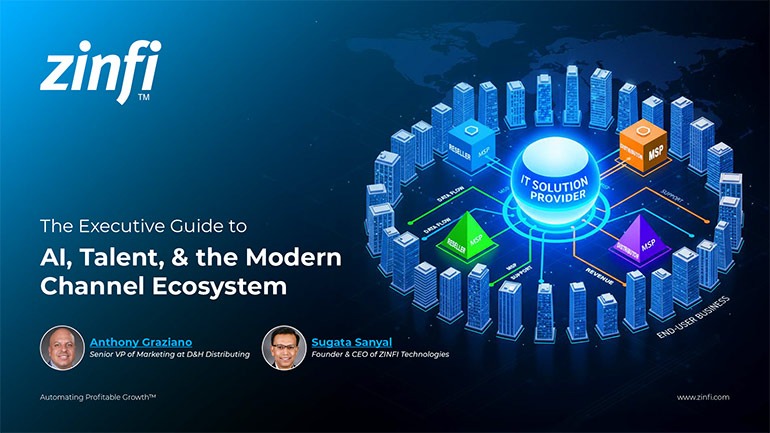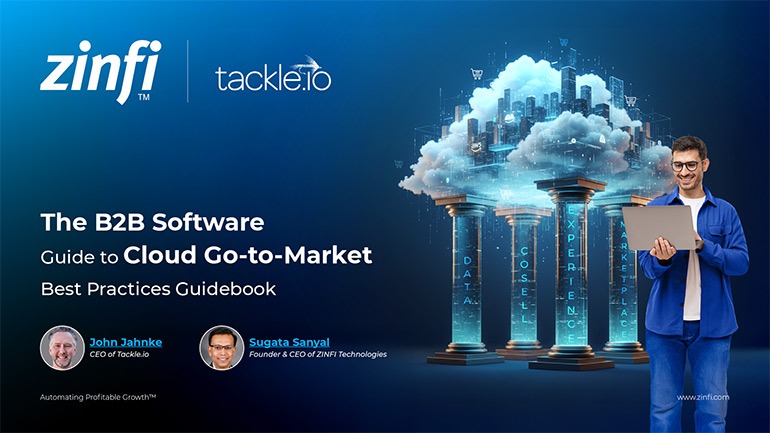Best Practices Articles

Why Digital Prospecting Matters in Today’s World
Over the past few decades, companies have invested considerable sums in building out an inside sales infrastructure. During this same period, we have also seen increases in demand for marketing automation. However, in many cases those two organizational investments have not come to fruition, and companies are asking whether they have the right investment mix to move forward as buying journey has changed completely over the past decade or so.
We all know there has been a recent shift in the marketplace, a relatively new phenomenon in which buyers are going online, searching for what they’re interested in, doing research, finding possible vendors and then checking out vendors online to come up with a short list of who to call. That entire process used to be a function of the traditional sales process. An inside sales rep would call up a potential prospect—essentially a cold call—to set up an appointment designed to educate the buyer. Today, that entire buying process today is completely visible. It follows that the selling process also needs to be completely visible, especially when it comes to engaging with a potential buyer upfront during the buying cycle. This monumental shift has been happening quietly and steadily over the past decade and, as a result, telemarketing no longer works the way it used to. These days when a telemarketer calls a potential customer, the prospect hangs up on them 9 times out of 10. The remaining 10% who do accept the call are likely to get highly irritated that someone has called them during the middle of the day. This is where digital prospecting comes in.
Digital prospecting is all about giving the buyer choices. Once the buyer has engaged and demonstrated a specific set of interests in certain products and services, the inside sales person can reach out and schedule appropriate conversations.
How can you make this happen? Here are four specific requirements companies need to fulfill in order to drive the digital prospecting process forward.
- Companies need to have a clear content marketing strategy. A significant portion of the content marketing strategy needs to be about digital content. It is not just about your web site anymore. It is about what and how you share across multiple social channels, blogs, media and other content distributors in your industry to cast a much wider net.
- There has to be a decent level of investment in automation. Now, I don’t mean automation just for the sake of automation. Instead, I’m suggesting companies take a careful look at their marketing and sales workflows and analyze how those two elements overlap, how they work together and how leads are generated and handed over. That entire process needs to be mapped and automated where it makes sense.
- There have to be sales enablement tools that specifically provide content across the complete prospecting lifecycle. When a potential buyer engages with a company looking to buy, say, a specific technical solution, that buyer typically does not jump right into a specification sheet or a product brochure. Most likely the buyer will also go through use cases and try to figure out whether the company addresses certain core pain points before they delve into product features, details, etc. Once that discovery process has happened and the buyer has determined that there is a possible fit, then he/she will start digging deeper. This is where product demos, solution videos and other necessary elements become absolutely critical. Now, during this engagement process, if the salesperson is aware and interested and actively interacting with the buyer, then instead of being another pushy inside salesperson, that individual can evolve into a more consultative role, being present to answer questions a buyer may have but without necessarily trying to close the sale in a hurry.
- The sales team needs to be retrained. The first three steps are about adjusting marketing strategy, deploying process automation and making content-based sales enablement tools available across the sales lifecycle. The last and most important step involves retraining the sales force. A lot of companies have a tendency to undertake massive restructuring and lay off sales people more or less randomly. The thinking seems to be that we don’t need to have such high costs for inside sales because the website will do everything. That approach is fundamentally wrong. If you have highly qualified, trained salespeople who know the details of your solutions and can answer prospects’ questions properly and with insight, your first step should be to determine which members of the sales force are “gatherers” and which are “hunters.” Once you know the profile and career objectives of each individual on your inside sales team, sort them out in a logical way. You can deploy the hunters—people who are capable of being solutions consultants—at the front end of the sales cycle. They cannot be pushy though. They will need to be inquisitive and try to determine where and how specific solutions might meet the prospect’s needs. People in this role will have a different type of profile than the gatherers, whose focus is on building and growing a relationship. This redeployment of the insides sales team based on individual profiles and career goals is quite critical in order to succeed in the new digital prospecting lifecycle.
Now, let’s take a step back and look at a possible transition plan. Today, if you have a large inside sales team but not enough content, your first step should be to put together a content marketing strategy. Remember, you cannot change your marketing lead flow overnight by transforming your content marketing. It is a long-term game. It will take you anywhere between 6 and 12 months to build a steady inflow of qualified leads. However, the great news is, as the lead inflow increases, your need to do outbound calling will also decrease. Not only that, but also for digital prospecting, the outbound calling tends to more focused on promotion and generating awareness of your content rather than on trying to push a buyer to a specific sales step such as setting up an appointment. So typically, outbound calling with digital prospecting means reaching out to prospects and asking questions. For example: “Hey, we’re calling from ABC Solutions. We were wondering whether you would be interested in attending a best practices seminar that addresses these two or three pain points.” If the prospects are interested, they will sign up. If they’re not interested, both parties move on. You can also create inbound flow from social media and create content based on optimizing keywords that will engage your potential buyers and drive traffic, both to your website and to your sales hotline.
Once this flow has been happening over a period of 12 months, you’re in a good position to deploy your inside sales team in a more logical fashion—based on what you have learned about who has which skills and where individuals want to go with their careers—and separate the gatherers from the hunters. This transition can create tremendous excitement within the organization. It can also go a long way toward mitigating the pervasive fear that workforces often experience, particularly the fear of change or fear of a reduction in the workforce—a step many companies mistakenly take, only to lose a large portion of their sales competencies that they built over a decade or more.
So, as we look back at digital prospecting, we realize it is not the same old thing. It is truly something new. It requires serious thinking about content marketing and it requires investment in automation, but only when you understand your marketing and sales process from the buyer’s perspective. It also requires realignment and redeployment of sales resources to provide a truly pleasant and highly engaging buying process for your prospects and buyers. When you get it right, however, digital prospecting will not only significantly reduce your overall sales costs but will also bring in significantly more visibility than the old ways of selling like cold calls and telemarketing to set up appointments, which rarely deliver in today’s marketplace.
For more information, please visit our website at https://www.zinfi.com.
Best Practices Guides
 Modernizing Channel Marketing: AI and Ecosystem Enablement Best Practices
Modernizing Channel Marketing: AI and Ecosystem Enablement Best PracticesDownload for FREE
 The Channel’s Shift to Partner-Led With AI Best Practices
The Channel’s Shift to Partner-Led With AI Best PracticesDownload for FREE
 Hyperscalers, ISVs, and AI: Shaping the Future of B2B Software Distribution
Hyperscalers, ISVs, and AI: Shaping the Future of B2B Software DistributionDownload for FREE
 Definitive Guide to a Partner Ecosystem-First Sales Strategy
Definitive Guide to a Partner Ecosystem-First Sales StrategyDownload for FREE
 The Partner-Led Digital and AI Transformation Best Practices
The Partner-Led Digital and AI Transformation Best PracticesDownload for FREE
 Startup Talent Recruitment: Hiring Missionaries, Not Mercenaries
Startup Talent Recruitment: Hiring Missionaries, Not MercenariesDownload for FREE
 The Future of Partner Relationship Management with AI in Partnerships
The Future of Partner Relationship Management with AI in PartnershipsDownload for FREE
 Cybersecurity for the 99%: Strategies from the Frontline
Cybersecurity for the 99%: Strategies from the FrontlineDownload for FREE
 Mastering Partner Relationships: A Strategic Approach to Business Growth
Mastering Partner Relationships: A Strategic Approach to Business GrowthDownload for FREE
 Mastering Partner Relationship Management: Keys to SaaS Channel Success
Mastering Partner Relationship Management: Keys to SaaS Channel SuccessDownload for FREE
 Navigating the AI Revolution: Guide for Partners in the Microsoft Ecosystem
Navigating the AI Revolution: Guide for Partners in the Microsoft EcosystemDownload for FREE
 Mastering the Modern Buyers Journey: Sales Leader’s Guide to AI & Engagement
Mastering the Modern Buyers Journey: Sales Leader’s Guide to AI & EngagementDownload for FREE